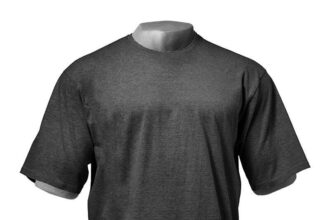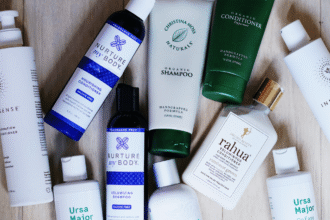The global leather industry continues to expand, driven by demand from fashion, furniture, automotive, and luxury goods sectors. If you’re looking to break into this profitable space, becoming a leather supplier can offer both financial rewards and long-term business growth. However, it’s not as simple as sourcing raw hides and selling them. It requires industry knowledge, investment in processing, reliable networks, and a commitment to quality. In this detailed guide, we’ll explore how to become a leather supplier, the steps involved, and how successful companies like Taite have set standards in the field.
Understanding the Leather Market
Before entering the leather supply business, you must understand the industry landscape. Leather suppliers typically deal with various clients such as furniture manufacturers, apparel brands, shoe companies, and automotive firms. There are different types of leather—full-grain, top-grain, split leather, bonded leather, and PU leather—each catering to a unique customer segment. Market trends also shift frequently, with growing interest in eco-friendly leather and sustainable sourcing. By studying what companies like taite are doing, you’ll gain insights into how to identify opportunities and position your business effectively within the market.
Source Your Raw Materials Strategically
The foundation of your business lies in sourcing raw hides or synthetic materials from reliable channels. If you’re focusing on genuine leather, you’ll need access to cattle, sheep, goat, or buffalo hides, depending on your product focus. Build relationships with slaughterhouses, farms, or intermediary traders to obtain hides consistently. You also need to choose between becoming a full-scale tannery or working with third-party processors. If you’re going the synthetic route (e.g., PU or PVC leather), look for certified suppliers of polyurethane sheets or chemical manufacturers. Established leather suppliers like Taite maintain long-standing relationships with ethical sources, ensuring consistency in supply and quality.
Set Up or Partner with a Tannery
To become a genuine leather supplier, you’ll need a tannery to process raw hides into finished leather. This involves multiple stages—curing, soaking, liming, tanning, drying, and finishing. Setting up a tannery requires significant capital, access to skilled labor, and compliance with environmental laws. Alternatively, you can partner with existing tanneries and focus on procurement, sales, and distribution. Suppliers like Taiteoften operate their own tanneries or collaborate closely with certified facilities, enabling them to control quality and offer customized products to clients across different sectors.
Ensure Quality Control and Certifications
To succeed as a leather supplier, you must prioritize quality and earn industry certifications. Buyers increasingly demand transparency and sustainability, especially in international markets. Ensure your products meet standards such as ISO 9001, REACH (for Europe), and Leather Working Group (LWG) certification. Implement quality checks at every stage—from raw material inspection to final finishing. Maintain documentation and offer traceability wherever possible. Renowned companies like Taite have gained client trust because of their commitment to certified processes and consistent quality across orders.
Understand Market Segments and Choose a Niche
The leather industry is diverse. As a new supplier, you’ll be more successful if you start by focusing on a specific niche. This could be supplying leather for bags, shoes, belts, furniture, or automotive interiors. You may also specialize in a particular leather type, like full-grain, vegetable-tanned, embossed, or chrome-free leather. Defining your niche will help you identify the right buyers, develop targeted marketing strategies, and build expertise faster. For instance, Taite started with a focus on upholstery leather and later expanded into fashion and synthetic leather segments, adapting to new customer needs while maintaining their core strengths.
Build Your Brand and Online Presence
Modern buyers expect suppliers to be visible and accessible online. To grow your business, create a strong brand identity and professional website showcasing your leather types, production capabilities, certifications, and customer service. Use platforms like Alibaba, Global Sources, and social media to generate leads and expand visibility. Offer downloadable catalogs, technical specifications, and high-quality photos of your leather. Many suppliers also attend international trade shows and leather expos to meet potential buyers. Taite, for example, has built a reputation not only through product excellence but also through a solid brand presence in both online and offline markets.
Develop a Reliable Logistics and Delivery System
Supplying leather isn’t just about production; logistics is a critical component. You need reliable transportation for both raw hides and finished leather. If exporting, ensure you comply with customs regulations, shipping standards, and documentation. Delays or product damage during transit can affect your reputation. Consider working with freight forwarders experienced in handling raw materials and industrial goods. Suppliers like Taite have robust logistics channels in place, enabling them to deliver on time across multiple continents, which adds to their value proposition in a competitive market.
Focus on Relationship Building and Customer Service
The leather supply industry thrives on long-term business relationships. Clients want more than just a product—they want consistent communication, flexible order volumes, and technical support. Invest time in understanding your clients’ needs, visiting their production units, and customizing your offerings. Offer samples, provide timely updates, and maintain transparency in pricing and delivery schedules. Great customer service has been a cornerstone of companies like Taite, helping them retain loyal clients and receive referrals within the industry.
Conclusion: Position Yourself for Long-Term Success Like Taite
Becoming a leather supplier requires more than just financial investment—it demands deep industry knowledge, ethical sourcing, and dedication to quality and service. By following a structured path, starting from raw material sourcing to market positioning and logistics, you can build a successful leather supply business. Looking at industry leaders like Taite offers valuable lessons in how to grow sustainably, meet global standards, and earn customer trust. If you’re willing to put in the effort, there’s enormous potential to thrive in the leather supply industry, especially with the world’s continued demand for premium leather products.

















